Culture method of Phnom Penh Cymbidium how to raise Phnom Penh orchid
Now many friends in order to purify the air at home, will put some plants at home as decorations have a beautiful environment. Phnom Penh Cymbidium has become our preferred plant, but how to cultivate Phnom Penh Cymbidium will be difficult for us. Now I will introduce the relevant knowledge to you.
First, Phnom Penh hanging orchids
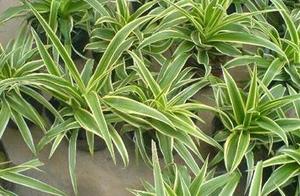
Phnom Penh Cymbidium belongs to Liliaceae, perennial evergreen herbs, with large cylindrical fleshy roots. The leaves are broadly linear and light green, born on short stems. Racemes 30 to 60 cm long, curved and drooping, with white florets; often produce clusters of rooted plantlets formed by plant buds on flower stems, which is very interesting. It grows fast and is easy to cultivate. It can be cultivated and appreciated all the year round in a brighter room. This kind of plant with gray leaves likes to live in a constant temperature. Can be placed in the bathroom, windowsill and other narrow space, you can plant year-round in the bright room to enjoy. Can be placed on the top of the cabinet or flower rack to choose a suitable location. Its slender and graceful branches and leaves can effectively absorb formaldehyde released by curtains and fully purify the air.
The common cultivated varieties are: Phnom Penh, yellow vertical stripes in the center of golden orchid leaves, white silver edges with vertical stripes in the center of white leaves. Temperature: like a warm environment, strong adaptability, the lowest temperature in winter is about 10 degrees. Light: like bright light, shade about 50%, avoid direct sunlight in summer, no shade in winter.
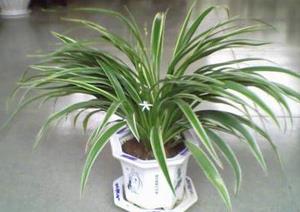
Second, how to raise Phnom Penh hanging orchids
Phnom Penh is a kind of Cymbidium, the planting method is the same as other Cymbidium, generally speaking, Phnom Penh has strong adaptability, luxuriant growth and easy cultivation.
1. Temperature. Cultivate indoors in winter, the temperature should not be lower than 5 degrees.
2. Light. Phnom Penh orchids are extremely sensitive to light. Shading should be carried out in summer and autumn, not in direct sunlight. 50% of the sun can be shaded in spring, or cultured in half-shade, and more light can be seen in autumn. Through observation, it can be found that the light is insufficient, the leaf color is light and sometimes even yellowish green; the light is too strong, and the leaves are yellow.
3. Watering. Appropriate watering during the formation period to keep the basin soil moist. Watering should be controlled in winter. At ordinary times, we should pay attention to the cleaning of the leaf surface and often spray water to the leaf surface.
4. Fertilization. Thin fertilizer is applied every half a month or so in the growing season. Nitrogen fertilizer should be controlled for mosaic varieties.
5. Placement. Hanging orchid can be hung, will have a different flavor, the height is suitable for human eyes or slightly higher, too high is inconvenient to water. When applying fertilizer, it should be removed from the hanging basket, and the leaves should be sprayed and washed carefully after fertilization.
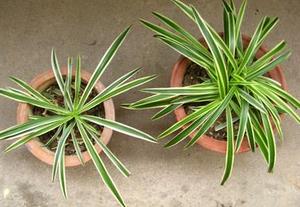
Third, the culture method of Phnom Penh orchid.
I. Culture methods
Cuttings and ramet propagation can be carried out at any time from spring to autumn. Cymbidium has strong adaptability and high survival rate, so it is generally easy to reproduce. When planting, as long as the stolon with new buds is inserted into the soil, it can take root in about a week, transplant it in a pot in about 20 days, and keep it in the shade with water.
When ramets, the plant of Cymbidium can be lifted out of the pot, the old soil and rotten roots can be removed, and the old root can be cut open, so that there are three stems on the split plant, and then transplanted and cultured respectively. The clustered stems and leaves on the stolon of Cymbidium can also be cut, which is actually a new plant larva, with leaves on the top and gas at the bottom, which can be planted in a flowerpot directly.
The seed propagation of Cymbidium can be carried out in March every year. Because its seed grain is not big, after sowing the seed, the covering soil above should not be thick, generally 1 square meter. When the temperature is 15 degrees, the seeds can sprout for about 2 weeks, and then transplant and culture after the seedlings take shape.
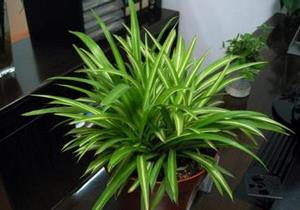
Cymbidium is a perennial evergreen perennial herbaceous flower with various forms, strong shade tolerance and easy management. It is often used to hang potted plants for indoor decoration or garden setting.
1. Temperature control. The hanging orchid likes the warm and humid climate, is not cold-resistant, grows fastest at 20 to 24 degrees, stops growing above 30 degrees, and the leaves are easy to turn yellow and dry.
2. Light adjustment. Outdoor cultivation in summer should pay attention to shade, so as not to make the light too strong, otherwise sunburn can easily occur.
3. Regulation of water and fertilizer. Spring and autumn growth season, watering should be adequate, basin soil should always keep moist, and often spray branches and leaves with water close to room temperature, to prevent dry tip, but not stagnant water.
4. Prune and change the basin. As the plant grows, the old leaves at the base should be cut frequently in order to maintain a good plant shape.
5. Pest control. The dense plant clusters of Cymbidium are poorly ventilated and vulnerable to scale insects, so prevention should be given priority to.
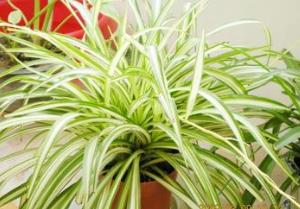
In fact, the breeding method of Phnom Penh is not difficult, the key is that we should pay attention to take good care of them at ordinary times, take care of every pot of Phnom Penh like taking care of our own children, pay attention to pruning branches and leaves, and pay attention to pest control. Give appropriate temperature and humidity to ensure that Phnom Penh has a good living environment.
Daily maintenance of Phnom Penh hanging orchids
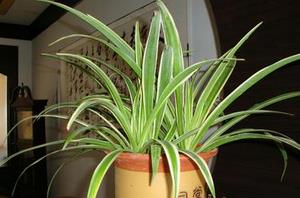
1. Phnom Penh hanging orchids prefer a semi-overcast environment. If the sun is direct and the air is dry, it is most likely to cause leaf tip scorch. Therefore, the hanging orchid must be placed in a cool and ventilated place, especially to pay attention to often spraying water to the leaf surface to increase environmental humidity.
2. Phnom Penh orchids like to be wet, but if too much watering or poor drainage of basin soil will lead to withered leaves and bananas due to rotten roots. Improper watering and fertilization will also cause the leaves to dry up.
3. Phnom Penh hanging orchids like fertilizer. If there is not enough fertilizer and water, the color of the leaves will become lighter and the leaf tips will be scorched. But do not apply too much fertilizer.
4. We must pay attention to frost injury in winter. Freezing damage occurs when the ambient temperature is below 4 degrees Celsius.
In order to maintain a good plant shape, the old leaves at the base should be cut frequently.
5. Pest control. The dense plant clusters of Cymbidium are poorly ventilated and vulnerable to scale insects, so prevention should be given priority to.

In fact, the breeding method of Phnom Penh is not difficult, the key is that we should pay attention to take good care of them at ordinary times, take care of every pot of Phnom Penh like taking care of our own children, pay attention to pruning branches and leaves, and pay attention to pest control. Give appropriate temperature and humidity to ensure that Phnom Penh has a good living environment.
Daily maintenance of Phnom Penh hanging orchids

1. Phnom Penh hanging orchids prefer a semi-overcast environment. If the sun is direct and the air is dry, it is most likely to cause leaf tip scorch. Therefore, the hanging orchid must be placed in a cool and ventilated place, especially to pay attention to often spraying water to the leaf surface to increase environmental humidity.
2. Phnom Penh orchids like to be wet, but if too much watering or poor drainage of basin soil will lead to withered leaves and bananas due to rotten roots. Improper watering and fertilization will also cause the leaves to dry up.
3. Phnom Penh hanging orchids like fertilizer. If there is not enough fertilizer and water, the color of the leaves will become lighter and the leaf tips will be scorched. But do not apply too much fertilizer.
4. We must pay attention to frost injury in winter. Freezing damage occurs when the ambient temperature is below 4 degrees Celsius.
Related
- Wuhan Hospital Iron Tree Blooming Result Was Instantly Frightened by the Gardener Master
- Which variety of camellia is the most fragrant and best? Which one do you like best?
- What is the small blue coat, the breeding methods and matters needing attention of the succulent plant
- Dormancy time and maintenance management of succulent plants during dormancy
- Minas succulent how to raise, Minas succulent plant pictures
- What are the varieties of winter succulent plants
- How to raise succulent plants in twelve rolls? let's take a look at some experience of breeding twelve rolls.
- Attention should be paid to water control for succulent plants during dormant period (winter and summer)
- Watering experience of twelve rolls of succulent plants
- Techniques for fertilizing succulent plants. An article will let you know how to fertilize succulent plants.



